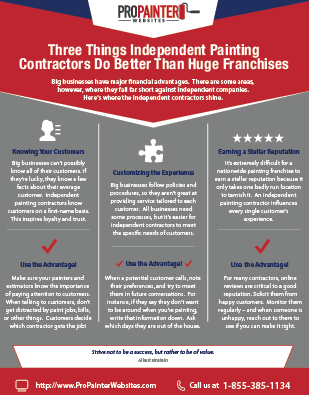When you're planning an industrial external paint job, seasonal factors can make or damage your outcomes. You'll intend to think about exactly how temperature level and humidity effect paint application and drying times. Picking home painting company near me can ensure your paint sticks effectively and lasts longer. However which can you paint during winter are genuinely the very best for this kind of work? Let's discover the key elements that can affect your job's success.
The Influence of Temperature Level on Paint Application
When you're planning an industrial external painting job, the temperature level can considerably affect how well the paint sticks and dries out.
Ideally, you intend to repaint when temperature levels vary in between 50 ° F and 85 ° F. If it's also chilly, the paint might not treat appropriately, bring about concerns like peeling off or cracking.
On the flip side, if it's also hot, the paint can dry out as well rapidly, preventing appropriate attachment and resulting in an unequal coating.
You should additionally think about the moment of day; early morning or late afternoon uses cooler temperature levels, which can be more favorable.
Always inspect the maker's recommendations for the specific paint you're using, as they typically provide assistance on the excellent temperature level range for optimal outcomes.
Moisture and Its Result on Drying Times
Temperature isn't the only environmental aspect that influences your business external paint job; moisture plays a substantial duty too. High moisture levels can decrease drying times considerably, influencing the general high quality of your paint job.
When the air is filled with moisture, the paint takes longer to heal, which can bring about issues like inadequate adhesion and a greater threat of mildew development. If you're painting on an especially damp day, be gotten ready for prolonged delay times in between coats.
It's crucial to check local weather and plan accordingly. Ideally, go for moisture levels between 40% and 70% for ideal drying out.
Maintaining these consider mind ensures your task stays on track and supplies a long-term coating.
Best Seasons for Commercial Outside Paint Projects
What's the best time of year for your industrial exterior painting tasks?
Spring and very early loss are normally your best choices. During these seasons, temperature levels are moderate, and humidity levels are often lower, producing excellent problems for paint application and drying out.
Stay clear of summer season's intense heat, which can trigger paint to dry also promptly, causing poor attachment and coating. Similarly, winter's chilly temperature levels can impede appropriate drying and curing, risking the longevity of your paint job.
Go for days with temperature levels between 50 ° F and 85 ° F for optimal results. Remember to inspect the neighborhood weather report for rain, as damp conditions can destroy your task.
Preparation around these variables guarantees your paint job runs smoothly and lasts much longer.
Conclusion
Finally, intending your industrial exterior paint tasks around seasonal considerations can make a substantial distinction in the outcome. By organizing job throughout the optimal temperatures and humidity degrees, you'll make sure better attachment and drying out times. Remember to watch on neighborhood weather forecasts and pick the right time of year-- springtime and very early fall are your best bets. Taking these steps will certainly assist you achieve a resilient and expert coating that lasts.
